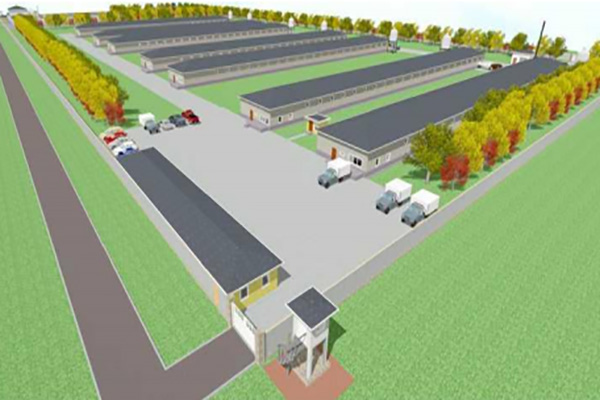
For large-scale egg producers managing over 10,000 hens, space efficiency, animal welfare, and long-term sustainability aren’t just goals—they’re survival essentials. Traditional flat-tier cages often fall short in high-density operations, leading to poor ventilation, increased labor costs, and elevated stress levels among birds. That’s where the multi-layer H-type chicken cage from Zhengzhou Livvi Machinery comes in—not as a luxury upgrade, but as a strategic necessity.
The H-type structure isn’t just visually striking—it’s engineered for maximum output per square meter. In real-world trials at commercial farms in Henan and Shandong provinces, this design increased hen housing capacity by up to 35% compared to conventional setups, without compromising bird comfort or access to feed and water. Each layer features independent air channels that reduce heat buildup—especially critical during summer months when temperatures exceed 32°C (90°F).
| Feature | Traditional Cage | H-Type Cage |
|---|---|---|
| Ventilation Efficiency | Low (requires fans) | High (natural airflow + adjustable vents) |
| Labor Cost Reduction | ~$1.20/hen/month | ~$0.45/hen/month |
| Egg Collection Time | 30–45 min/day | 15–20 min/day |
Corrosion resistance is more than a feature—it’s a commitment to farm longevity. The H-type cages are coated with a zinc-rich galvanized finish combined with powder coating, tested under accelerated salt spray conditions for over 1,000 hours without visible rust. This means fewer replacements, less downtime, and lower total cost of ownership over a 10-year lifespan—a key factor for sustainable livestock operations.
One farm manager in Hebei reported a 27% drop in egg breakage rates after switching to H-type cages due to reduced bird movement and better nest positioning. “It’s not just about productivity,” he said. “It’s about creating an environment where chickens feel safe—and that shows in their laying performance.”

As global demand for responsibly sourced eggs grows, so does the pressure on producers to meet environmental standards. These cages support circular farming principles by minimizing waste, reducing energy use through passive cooling, and enabling easier manure management via automated collection systems. They also align with EU and North American poultry welfare guidelines—making them ideal for export-focused operations.
Whether you're scaling up from 5,000 to 15,000 hens or modernizing an existing facility, the H-type cage offers a proven path to higher yields, improved animal health, and reduced operational strain.
Ready to future-proof your farm? Download Our Free Guide: How to Upgrade Your Poultry Facility for Profit & Sustainability

